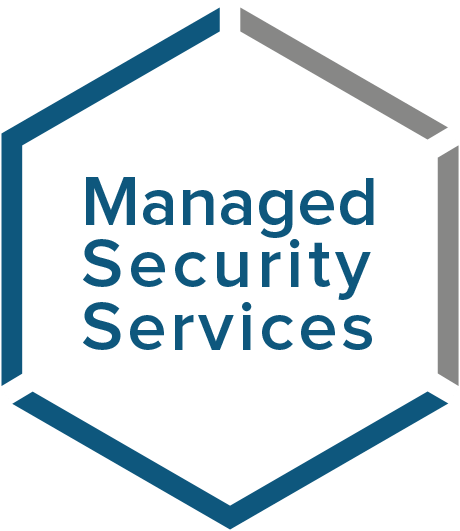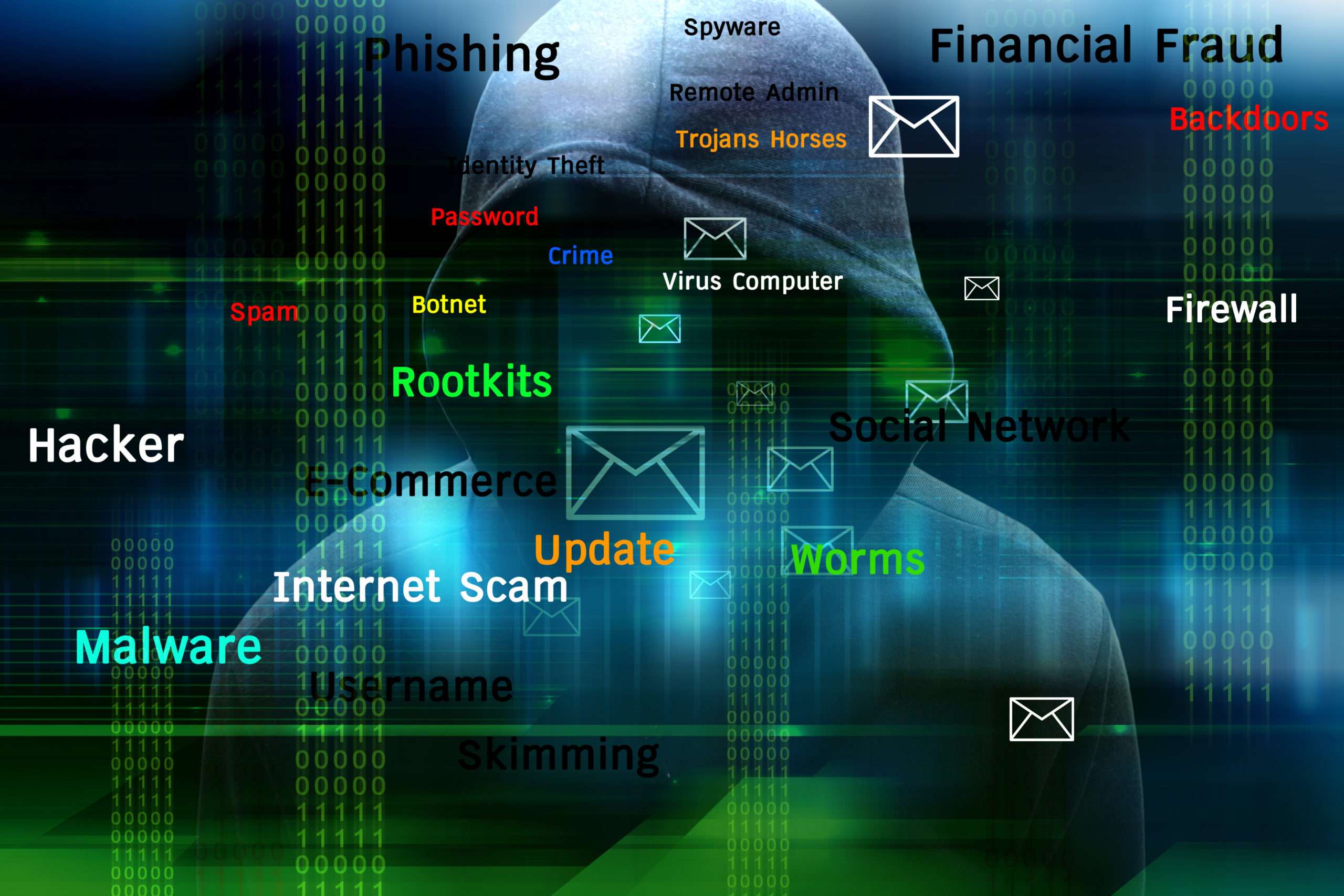MANAGED SECURITY SERVICES
Protect your network from cyber threats and ensure your data's confidentiality, integrity, and availability.


Intelligent 24/7 Security Service Monitoring
Providing 24/7 security service monitoring requires continuous attention and diligence. We adopt a proactive approach by conducting ongoing, real-time monitoring to prevent security threats as soon as they emerge. In today's intricate IT environment, security threats can arise from various sources. By adopting a centralized approach, we will serve as a protective shield, standing guard over your network, and defending it against any possible threats, all day, every day.
Predict Advanced Threats Before They Become a Problem
By availing our managed security services, we can keep a constant watch on your network and detect potential threats before they escalate into major problems. Malware and other malicious programs can create backdoors for attackers to exploit later, posing a significant risk to your network security. However, with our expertise, we can identify and resolve these threats promptly, saving you and your team from any potential nightmares.

Our Process
Welcome to our managed security services! We offer comprehensive security solutions to protect your website from cyber threats and ensure the confidentiality, integrity, and availability of your data.
Our team of experienced security professionals uses the latest tools and techniques to monitor your website 24/7 and detect any suspicious activity or potential security breaches. We offer a range of services, including:
- Vulnerability scanning and management: We use state-of-the-art scanning tools to identify vulnerabilities in your website and provide recommendations to remediate them.
- Threat detection and response: Our team monitors your website for any signs of malicious activity and responds quickly to prevent any potential breaches.
- Security incident response: In the event of a security incident, we have a detailed plan in place to investigate, contain, and resolve the issue.
- Compliance management: We help ensure your website is compliant with relevant regulations and standards, such as PCI-DSS, HIPAA, and GDPR.
- Security awareness training: We offer customized training for your staff to help them understand the importance of security and how to prevent common cyber threats.
At our managed security services, we take a proactive approach to security to ensure that your website is always protected. Contact us today to learn more about how we can help you safeguard your website and your business.
Business Continuity Services: Ensuring Uninterrupted Operations, 24x7
In the face of IT challenges, having a dependable partner by your side is crucial. At our company, we guarantee seamless business operations round the clock.
Why You Should Prioritize Business Continuity Services
In today's business landscape, regardless of your industry, 24/7 accessibility is expected. Any form of downtime or system failure, whether caused by network issues or natural disasters, can result in significant financial losses that no business can afford. Failing to maintain continuity puts your market reputation at risk and may even lead to permanent closure, as customers may turn to your competitors.
The Importance of Business Continuity Services
To ensure uninterrupted operations and safeguard against downtime, customized business continuity services are essential. These services enable you to swiftly recover and resume your operations even after a major outage or system failure, allowing you to get back on track without delay.
By leveraging business continuity services, you can establish a robust framework to prevent downtime and maintain round-the-clock availability, empowering your business to thrive in any situation.
Cutting-Edge Business Continuity Solutions
At PTI, we have developed cutting-edge business continuity solutions that prioritize the swift recovery of your systems and sensitive data, allowing you to regain productivity even in the aftermath of a catastrophic event. We go above and beyond to safeguard your IT security, provide reliable data backup, and optimize your IT operations. Our continuous testing and monitoring ensure the seamless and efficient performance of your backups.
Reach out to us today to leverage our business continuity services and uphold a reputation that instills confidence in your customers. Trust us to keep your business running smoothly, no matter what challenges arise.
The Advantages of Business Continuity Services:
- Enhance Customer Satisfaction: By ensuring uninterrupted operations, business continuity services contribute to higher customer satisfaction levels, as clients can rely on consistent service availability.
- Swift Recovery and Minimal Downtime: With business continuity services in place, you can quickly bounce back from disruptions, minimizing downtime and its associated negative impact on productivity and revenue.
- Retain Loyal Customers: Continuous service availability fosters customer loyalty, as clients appreciate your commitment to delivering uninterrupted services, even during challenging circumstances.
- Set Reliability Standards: Implementing business continuity services allows you to establish new benchmarks of reliability in your industry. Customers can trust your organization to consistently meet their needs without interruptions.
- Uninterrupted Revenue Generation: By avoiding breaks in operations, business continuity services enable you to maintain a steady revenue stream, ensuring business sustainability and growth.
- Preserve a Strong Industry Reputation: Consistently delivering uninterrupted services positions your business as a reliable and trustworthy partner, helping you maintain a positive reputation within your industry.
- Minimize Downtime Losses: Business continuity services provide a framework to minimize losses caused by downtime, protecting your bottom line and minimizing financial repercussions.
The Necessity and Mandatory Nature of Cybersecurity and Compliance Regulations
In today's business landscape, compliance with cybersecurity regulations is not only necessary but also mandatory. With the introduction of new industry legislation and regulatory requirements across sectors, adherence to cybersecurity standards has become a crucial driver of business success.
As cyberattacks become increasingly frequent and sophisticated, industry organizations and governments are prioritizing cybersecurity enforcement by establishing more stringent compliance conditions. However, compliance standards often struggle to keep pace with the evolving cybersecurity landscape. Therefore, organizations must adopt a proactive cybersecurity approach to stay ahead of changing security requirements and leverage emerging technologies effectively.
Understanding the Risks of Data Breaches
Recent statistics indicate that small businesses are prime targets for hackers seeking unauthorized access to data for illicit distribution on the dark web. These cybercriminals employ hacking techniques and social engineering attacks to exploit vulnerabilities in systems, platforms, software, and human factors.
Many small businesses lack the necessary resources to adequately defend themselves against such attacks, making them more susceptible to continued targeting by cybercriminals.
Defining Compliance and Its Importance
Compliance, in a broad sense, refers to adhering to laws and meeting specific requirements. In the realm of cybersecurity, compliance entails designing software that incorporates risk-based measures to ensure the security, privacy, and confidentiality of stored, transmitted, or distributed information.
However, compliance with cybersecurity regulations is not confined to a single standalone requirement or legislation. Depending on the industry, various criteria can overlap, leading to ambiguity and increased workload for organizations that approach compliance with a piecemeal troubleshooting approach.
Sensitive Information Subject to Cybersecurity Compliance
Cybersecurity and data protection regulations primarily focus on securing sensitive data, such as personally identifiable information (PII), protected medical information (PHI), and financial data. Personally identifiable information encompasses data that uniquely identifies individuals, including:
- First and Last Names
- Date of Birth
- Social Security Number
- Address
- Mother's Maiden Name
To ensure compliance, organizations must prioritize safeguarding this confidential data, implementing robust cybersecurity measures, and staying updated with evolving regulations to mitigate risks effectively.
HIPAA (Health Insurance Portability and Accountability Act)
Applicable Compliance Requirement and Covered Security Areas: HIPAA regulations primarily apply to healthcare organizations in the United States and their business associates. The focus of compliance lies in effectively creating, storing, and transmitting electronically protected health information (ePHI). The paramount objective is to safeguard patients' data and ensure its protection at all costs.
Advantages of Cybersecurity Enforcement Compliance and Regulatory Services
Organizations that adhere to industry or local cybersecurity regulations enjoy a range of benefits by actively enforcing compliance measures. When a data breach occurs, organizations that comply with cybersecurity requirements are legally obligated to take recommended steps. Failure to comply can result in severe fines and penalties if a violation is discovered. Strict adherence to enforcement criteria significantly reduces the likelihood of data breaches and the associated costs of response, recovery, and other intangible losses such as reputational damage, business disruption, and financial losses.
Moreover, robust cybersecurity enforcement measures help organizations maintain the integrity of their operations, build and sustain consumer trust, and foster customer loyalty by ensuring the safety and protection of confidential customer information. By implementing transparent and consistent processes for handling, storing, and utilizing sensitive data, organizations can enhance operational efficiency.
Compliance with regulatory enforcement criteria and specifications also offers benefits beyond legal compliance and protection of confidential data. Implementing necessary safeguards and security measures not only protects confidential customer and employee information but also strengthens the overall security posture of the organization. This, in turn, safeguards intellectual property such as trade secrets, software code, product specifications, and other critical details that provide a competitive advantage to the company. By prioritizing cybersecurity enforcement, organizations can enhance their resilience and protect their most valuable assets.
Steps to Establishing an Enforcement Program for Compliance & Regulatory Services
- Set Risk Tolerance: After assessing the risk, determine whether to accept, mitigate, transfer, or avoid the risk.
- Establish a Framework for Risk Analysis: As regulations and guidelines emphasize a risk-based enforcement approach, organizations of all sizes need to actively engage in the process of risk analysis.
- Identify: Identify all information services, information systems, networks, and the data they access.
- Assess Risk: Evaluate the risk level associated with each type of data. Identify and assess the risk in areas where high-risk data is processed, distributed, or collected.
- Evaluate Risk: After addressing changes, evaluate the risk. Organizations typically use the formula: Risk = (Breach x Impact likelihood) / Cost.
- Develop a Compliance Team: Even small to mid-sized companies require a dedicated enforcement team. Cybersecurity cannot operate in isolation. Establish an interdisciplinary workflow that connects various departments, including IT, as organizations increasingly transition their critical business infrastructure to the cloud.
- Stay Vigilant Against Evolving Risks: Compliance programs must focus on how risks evolve. Cybercriminals continuously seek new ways to gain unauthorized access to information. Rather than discovering new vulnerabilities, they often modify existing tactics, such as through Zero-Day Attacks or combining different types of known ransomware programs. Continuous monitoring helps identify emerging threats. Timely response to identified risks is crucial for effective compliance. Failing to respond to recognized threats leaves organizations vulnerable to potential breaches and exposes them to negligence claims resulting from inadequate protection.
- Implement Ongoing Monitoring and Response: Establish robust monitoring mechanisms to identify and address emerging threats proactively. Continuously monitor systems, networks, and data to detect any potential vulnerabilities or breaches. Promptly respond to identified risks and take necessary actions to mitigate them. This proactive approach minimizes the chances of data breaches and strengthens overall compliance efforts.
- Regularly Update and Improve: Compliance programs should not be static but rather adapt to the evolving cybersecurity landscape. Regularly review and update enforcement measures, policies, and procedures to align with changing regulations and emerging threats. Implement lessons learned from incidents and audits to enhance the effectiveness and efficiency of the compliance program.
By following these steps, organizations can establish a comprehensive enforcement program for compliance and regulatory services, ensuring proactive protection against evolving risks and demonstrating a commitment to cybersecurity best practices.
The Importance of Continual Documentation for Consistent Assurance
Preserving the security of your information is crucial, but equally important is documenting the actions taken to ensure that security. Compliance is achieved through the record-keeping of these actions. While you may have implemented robust security measures to protect your devices, networks, and applications, without proper documentation, it becomes challenging to demonstrate the quality and effectiveness of your control measures.
Continual documentation of your assessment and response activities provides the necessary details to establish governance and prove compliance to internal or external auditors. It also facilitates corporate leadership discussions and enables the Board of Directors to thoroughly evaluate the cybersecurity risks faced by the organization.
The Need for a Single Source of Information
Maintaining a centralized and shared repository of records is essential due to the multiple stakeholders involved in cybersecurity compliance activities. When records are not centrally managed, they become vulnerable to various enforcement threats. Unauthorized changes may be made to shared records without the knowledge of the record owner, and users may create copies, leading to multiple versions and a lack of visibility.
Having a common information source allows all stakeholders to have control over and review enforcement activities while ensuring the integrity and accuracy of compliance data. This centralized approach enhances collaboration, reduces the risk of discrepancies or data manipulation, and provides a comprehensive view of compliance efforts for effective decision-making and reporting.
